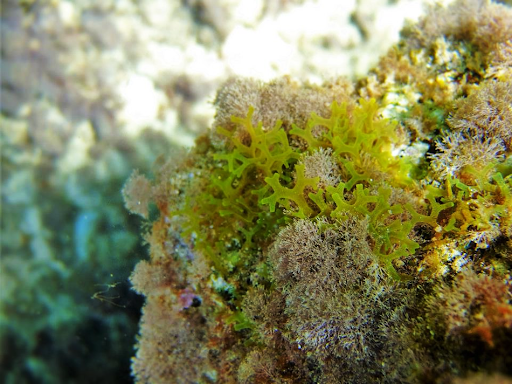Blue Seawalls: Using Artificial Structures to Support Biodiversity
By Veronica Farrugia Drakard
Twitter: @Fucus_Whisperer
Compared to our knowledge of the terrestrial environment, the ocean remains enigmatic; a vast, relentless mystery, the depths of which we understand less than the surface of the Moon. Serene though they may appear, coastlines the world over are being remodelled and redesigned to suit the needs of a growing human population, through the addition of artificial structures. Most stretches of shore now feature at least one seawall, breakwater, or other construction that in some way modifies the natural coastline; for example, 50% of Sydney Harbour in Australia is protected by seawalls, and 46% of English coastlines feature artificial beaches or structures. We call this ‘ocean sprawl’, and it has become something of a concern, as artificial structures simply do not support the same biodiversity as a natural shore would. This is where eco-engineering comes in.
Eco-engineering is the application of ecological ideas to the design of artificial infrastructure. In the marine context, it involves observing the coastal ecosystem, identifying those features which allow natural biodiversity to flourish, and incorporating them into the design of seawalls, breakwaters, and other coastal structures. This is the fundamental concept behind the Ecostructure Project (ECOSTRUCTURE – Climate Change Adaptation through Ecologically Sensitive Coastal Infrastructure), which is part-funded by the European Regional Development Fund (ERDF) though the Ireland-Wales Cooperation programme 2014-2020.
An underwater seaweed assemblage supporting biodiversity (Photo credit: Veronica Farrugia Drakard)
The Ecostructure Project has been doing a variety of fascinating things in this area, including with seaweed. When asked to picture what the future of our relationship with the ocean might look like, we probably don’t think of seaweeds. But while they may not be as charismatic as sharks or stingrays, our weedy green (or brown, or red) friends are critically important to the function of marine ecosystems. Along with phytoplankton, they are the lungs of the ocean, absorbing energy from the sun to produce oxygen through photosynthesis. Much like plants on land, they constitute the basis of coastal food webs; much like terrestrial forests, they provide habitat and shelter for a vast array of creatures. It makes sense, therefore, that if we can encourage their growth on artificial structures, everything else – fish, crustaceans, vibrant anemones – will follow.
Certain key seaweed species are what is known as ecosystem engineers, i.e., their three-dimensional structure is such that they create a habitat in and of themselves. Kelps are one example, and another is the bladder wrack, Fucus vesiculosus. This species can grow on concrete seawalls and breakwaters, which begs a few questions: are there differences in how bladder wrack grows on natural and artificial structures? What contributes to these differences? What implications does this have for the communities of marine organisms that depend on F. vesiculosus? This research is now potentially close to publication, so watch this space for answers (and even more questions!).
Fucus vesiculosus, the ecosystem engineer (Photo credit: Veronica Farrugia Drakard)
On a more directly applied level, Ecostructure has collaborated with ArtEcology to deploy and test Vertipools© in the context of a standardised, large-scale sampling strategy. These are artificial rockpools which can be attached to seawalls to increase water retention, which creates a refuge for organisms during low tide when water levels drop, and the seawall dries out. These Vertipools© are currently attached to a number of seawalls on the East coast of Ireland under different environmental contexts (e.g., estuaries vs fully marine sites), and are being checked every few months to record biodiversity inside them. This kind of modification can be particularly useful in a coastal management context as it can be applied to any existing seawall without the need to redesign and reconstruct the structure, which in most cases is not feasible.
A Vertipool© after 9 months in the environment (Photo credit: Veronica Farrugia Drakard)
Conversations around the future of our oceans often seem to have a sense of inevitability about them. There is this idea that coastal biodiversity and a human presence are mutually exclusive; our footprints, so to speak, are indelible. This may be the case, but we should also have a sense of hope. Increasingly, global discussions on the environment are focused on the concept of sustainability, of human integration with our ecosystems. Fundamental to this is further research into how coastal ecosystems work and how we can exist and thrive within these systems. Although we have begun to grapple with these issues, much remains to be done if we are to preserve our valuable coastlines into the future.



